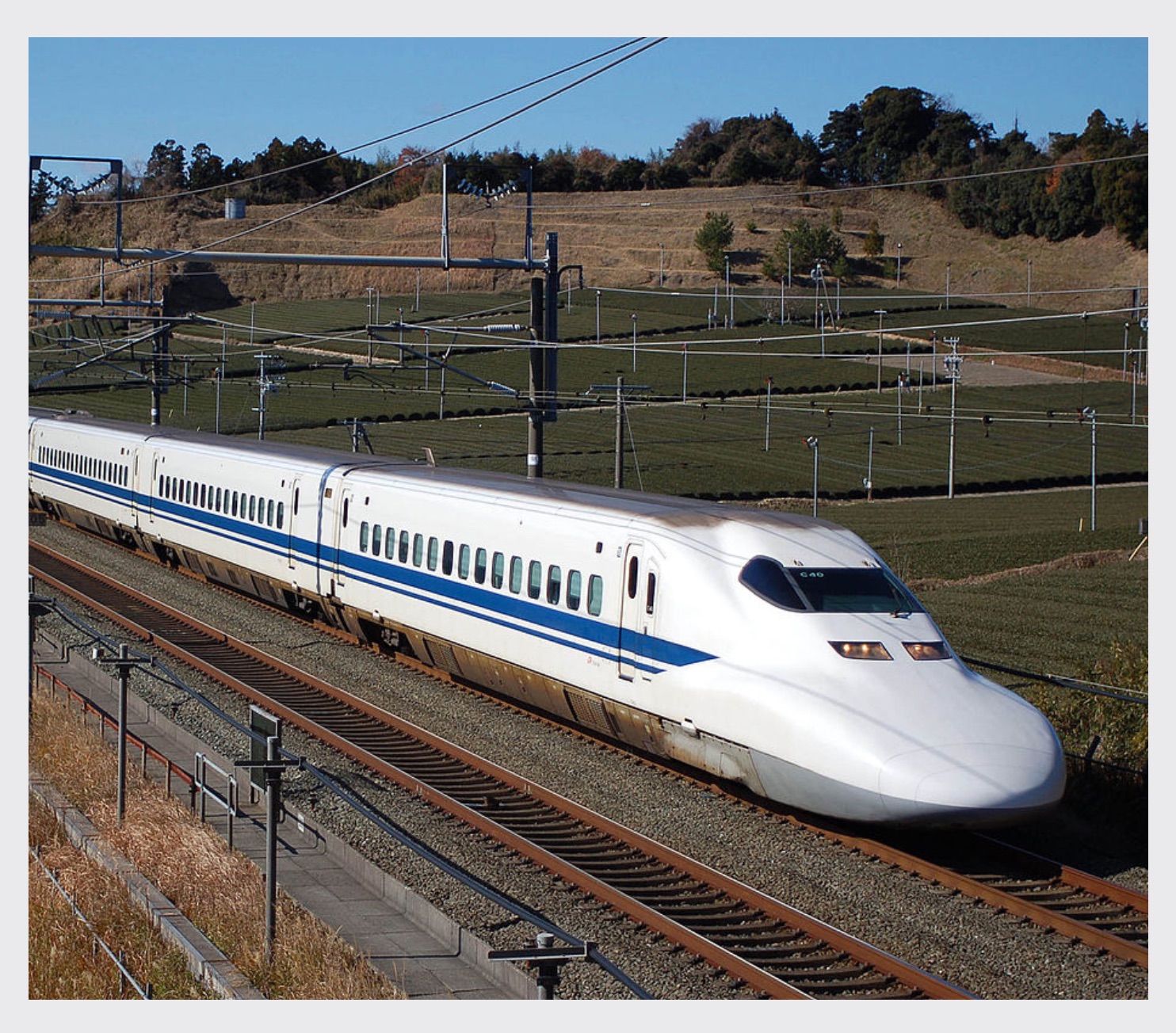Japan's Shinkansen: Faster than a speeding bullet!
Many countries are obsessed with high-speed rail. Britain hopes to build a high-speed link known as HS2. It would connect London to Birmingham, Manchester and Leeds. In the USA, there are plans to build a high-speed rail link between San Francisco and Los Angeles. France, Spain, and China are all expanding their networks of high-speed trains.
Shinkansen, Japan's high-speed “bullet” train, is usually shown as the perfect example by rail companies and governments who want their own high-speed train systems. Shinkansen is fast, safe, and comfortable. Some tourists fly all the way to Japan to enjoy a ride on Shinkansen. Able to travel at a maximum of 320 kmh/200 mph, these trains can take you from Tokyo to your destination in less than half the time it takes to drive a car there.
But how did Japan come to be the world leader in high-speed trains? The answer is simple: geography! Yeah, Japan’s geographical features influenced the rail network's development. Japan is a 2,000 km-long archipelago with four main islands. It has few natural resources and mainly mountainous terrain. This severely constrains land use, with about 80% considered uninhabitable. Japan's 128 million inhabitants live in a few densely populated parts of the country. The purpose of Shinkansen is to bring those populations together and link the major cities in just a few hours.
So it is all clear now, isn’t it? Japan needed a new transportation system, given the huge number of people that have to be moved. It was a necessity. An urgent one. The Japanese found the best solution. “Necessity is the mother of invention” and so we have the world-class Shinkansen “bullet” train.

